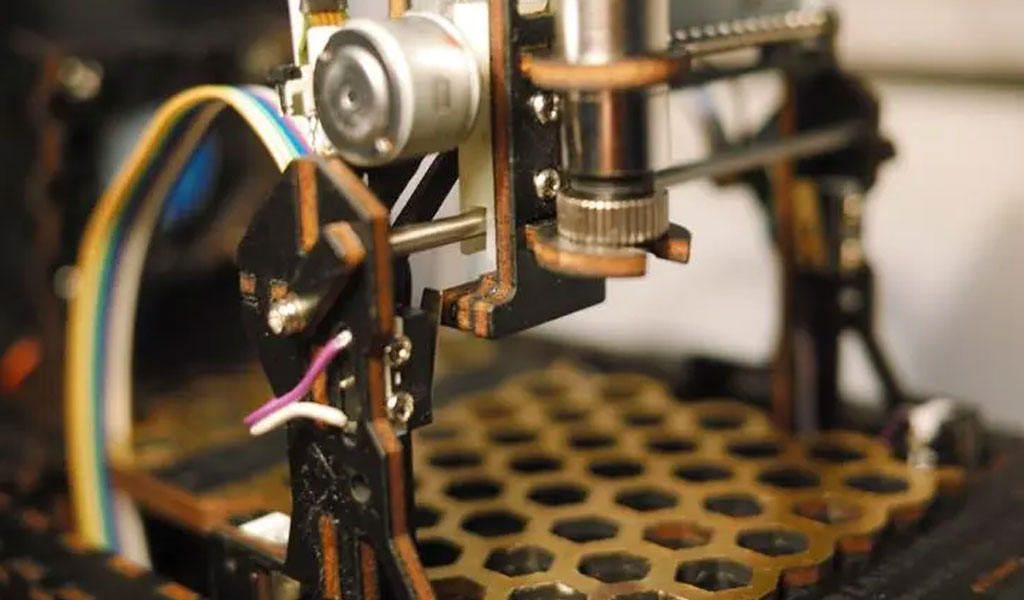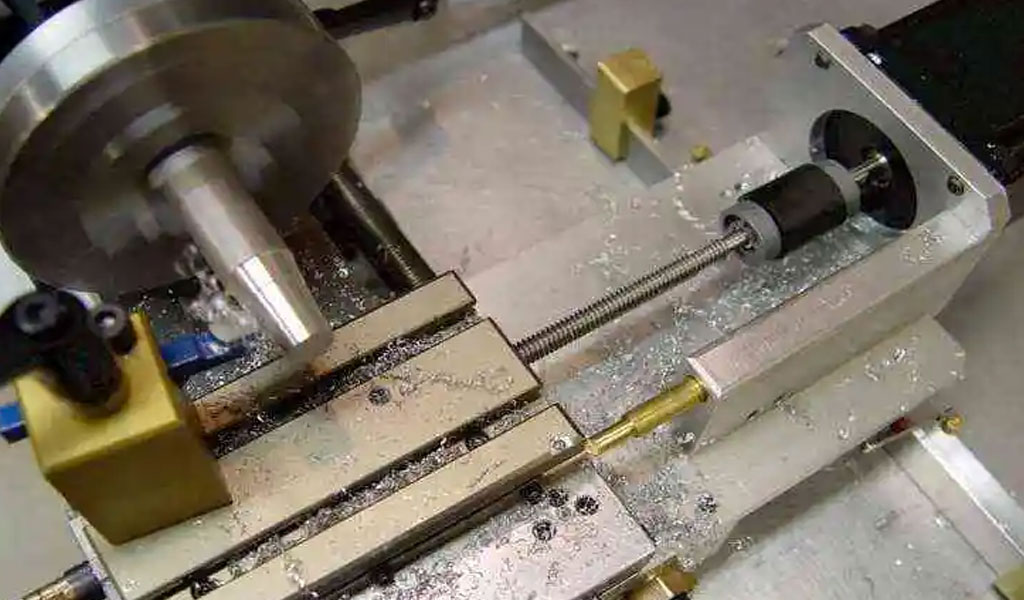In the realm of precision manufacturing, two highly advanced and sought-after techniques have emerged as cornerstones of intricate and accurate fabrication: Micro Laser Cutting and Micro CNC Machining. These technologies have revolutionized industries that demand precision at microscopic levels, providing solutions for diverse applications across sectors such as electronics, medical devices, aerospace, and more.
This comprehensive guide aims to delve into the fundamental aspects, capabilities, applications, advantages, and limitations of Micro Laser Cutting and Micro CNC Machining, allowing a deep understanding of these techniques and aiding in the selection of the most suitable method for specific manufacturing requirements.

Understanding Micro Laser Cutting
Micro Laser Cutting is a non-contact subtractive manufacturing process that employs highly focused laser beams to precisely cut or ablate materials, resulting in extremely fine, accurate, and intricate patterns.
This technology utilizes various types of lasers, including fiber, CO2, and ultrashort pulse lasers, each tailored to specific material types and thicknesses.
Working Principle of Micro Laser Cutting
The fundamental principle of Micro Laser Cutting involves focusing a concentrated beam of light onto the material’s surface, causing localized heating and vaporization. This controlled vaporization creates a narrow kerf, enabling precise cutting with minimal heat-affected zones (HAZ). The process is guided by Computer Numerical Control (CNC) systems, ensuring exceptional accuracy and repeatability.
Materials Suitable for Micro Laser Cutting
Micro Laser Cutting is compatible with an extensive array of materials, ranging from metals (e.g., steel, aluminum, titanium) to non-metals (e.g., plastics, ceramics, composites). Its versatility allows for intricate cuts in materials that are difficult to process using conventional methods.
Applications of Micro Laser Cutting
The versatility and precision of Micro Laser Cutting find applications in various industries. Examples include the creation of stents laser cut and microfluidic devices in the medical sector, fabrication of electronic components like microcircuits and sensors, and the production of fine jewelry and intricate models in the consumer goods industry.
Advantages of Micro Laser Cutting
- Precision and Accuracy: Micro Laser Cutting offers unparalleled precision, achieving intricate details with high accuracy, even on minute scales.
- Minimal Material Waste: Its non-contact nature minimizes material wastage, making it cost-effective for high-value materials.
- Versatility: The technology is versatile, compatible with a wide range of materials and thicknesses.
- Reduced Post-Processing: Minimal burrs and heat-affected zones reduce the need for extensive post-processing.
Limitations of Micro Laser Cutting
- Material Thickness Limitation: While suitable for a wide range of materials, thicker materials might pose limitations due to power absorption.
- Heat-Affected Zones: Some materials are sensitive to heat, causing undesired alterations in their properties.
- Initial Equipment Cost: The setup and equipment costs for Micro Laser Cutting can be relatively high.
Exploring Micro CNC Machining
Micro CNC Machining involves the use of Computer Numerical Control (CNC) systems to control precision machining tools such as mills, lathes, and routers, enabling the creation of intricate and precise components.
This subtractive manufacturing process relies on cutting tools to remove material from a workpiece, guided by precise computer-generated instructions.

Working Principle of Micro CNC Machining
CNC Machining operates on the principle of material removal through various cutting tools, including end mills, drills, and reamers. The CNC system translates digital designs into precise tool movements along multiple axes, allowing for complex shapes and dimensions to be achieved with exceptional accuracy.
Materials Suitable for Micro CNC Machining
Similar to Micro Laser Cutting, Micro CNC Machining is versatile and compatible with an extensive range of materials, from metals like brass and stainless steel to plastics, wood, and composites. This flexibility enables the creation of intricate components across various industries.
Applications of Micro CNC Machining
Micro CNC Machining finds applications in industries requiring high-precision components, such as aerospace for manufacturing miniature parts, the automotive sector for producing intricate engine components, and the electronics laser cutting industry for crafting precise connectors and housings.
Advantages of Micro CNC Machining
- High Accuracy: CNC Machining delivers exceptional accuracy, enabling the creation of intricate parts with tight tolerances.
- Versatility in Material Selection: It is compatible with various materials, expanding its applicability across industries.
- Scalability: CNC Machining allows for both prototyping and mass production with consistent quality.
- Surface Finish: The process can achieve superior surface finishes, reducing the need for additional finishing processes.
Limitations of Micro CNC Machining
- Tool Access Limitation: Complex geometries or internal features may pose challenges due to tool accessibility.
- Cycle Time: Intricate designs or complex parts might require longer machining times, impacting overall production speed.
- Initial Setup and Programming Time: Programming CNC machines and setting up toolpaths can be time-consuming, especially for complex components.
Comparative Analysis: Micro Laser Cutting vs Micro CNC Machining
Precision and Accuracy
Both Micro Laser Cutting and Micro CNC Machining excel in precision and accuracy. Laser Cutting achieves finer details with minimal kerf widths, whereas CNC Machining offers exceptional dimensional accuracy and surface finishes.
Material Compatibility
While both technologies support a wide range of materials, the choice between them might depend on the material properties and thickness. Laser Cutting is often preferred for thinner materials, while CNC Machining handles a broader spectrum, including thicker components.
Application Specificity
The choice between Micro Laser Cutting and Micro CNC Machining heavily depends on the specific application requirements. Laser Cutting is optimal for intricate designs, whereas CNC Machining excels in producing complex geometries and internal features.
Cost Consideration
Initial setup costs for both technologies can vary. Laser Cutting might have higher initial equipment costs, but CNC Machining can incur significant expenses in programming and tooling.
Speed and Production Volume
CNC Machining can have a higher production speed for certain designs due to simultaneous multi-axis machining capabilities. Laser Cutting might have advantages in simpler designs or thinner materials, where it can outpace CNC Machining.
Conclusion
In the realm of precision manufacturing, Micro Laser Cutting and Micro CNC Machining stand as pillars of advanced fabrication, offering unparalleled precision and versatility. Each technology has its strengths and limitations, catering to diverse industrial needs. Choosing between them requires a deep understanding of material properties, design intricacies, and production volume considerations.
The selection ultimately depends on the specific requirements of the project, where factors like material type, thickness, design complexity, and budget constraints play crucial roles. By comprehensively understanding the capabilities and limitations of Micro Laser Cutting and Micro CNC Machining, manufacturers can make informed decisions, optimizing their production processes for maximum efficiency and precision.
This article serves as a comprehensive guide to aid in navigating the complexities of these cutting-edge manufacturing technologies, empowering decision-makers to choose the most suitable method for their precise manufacturing needs.
